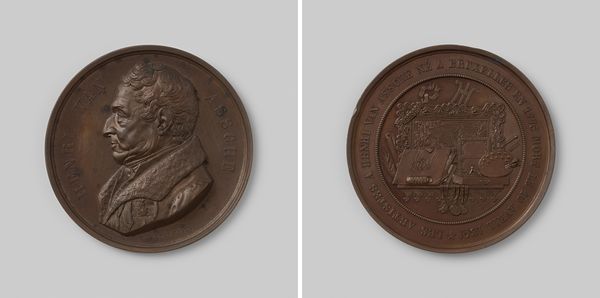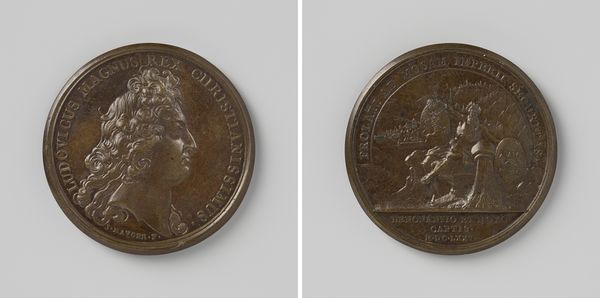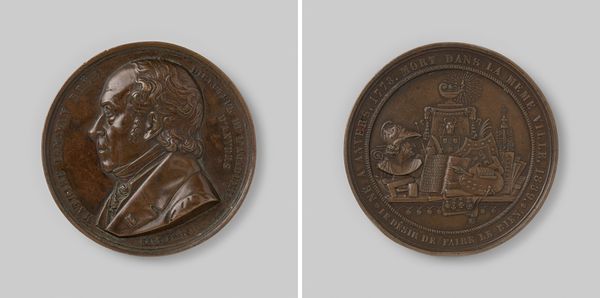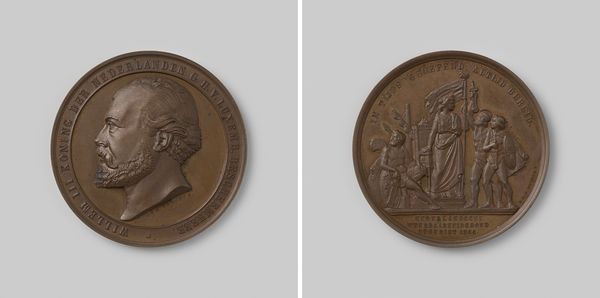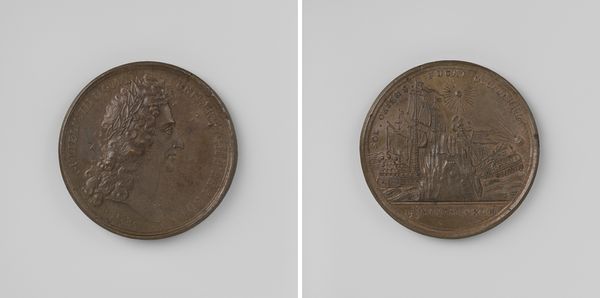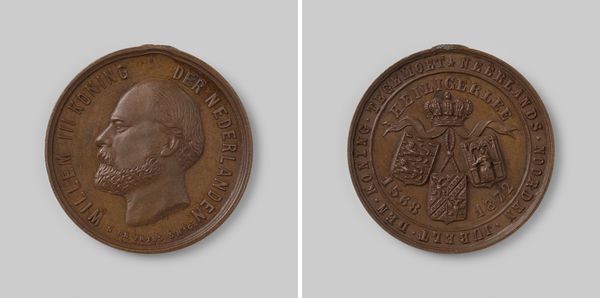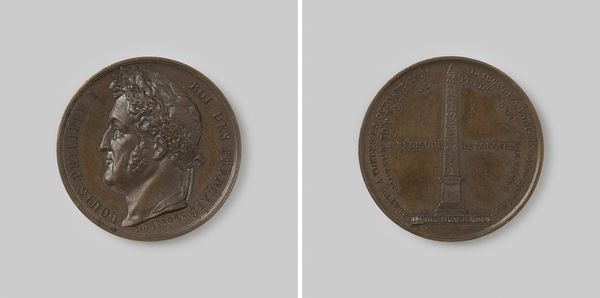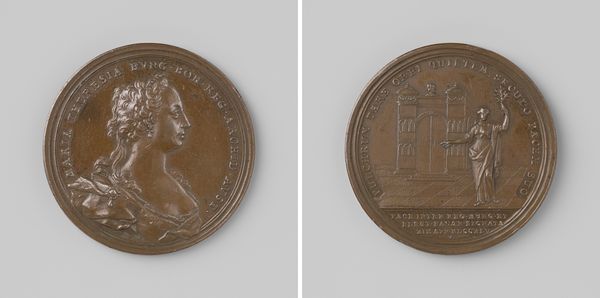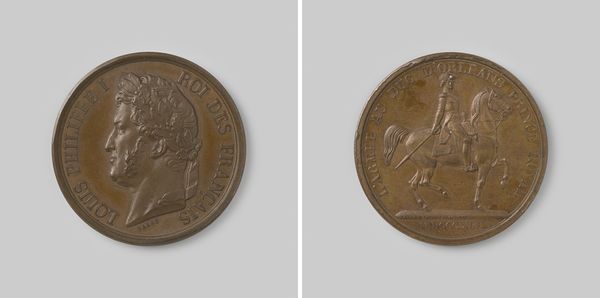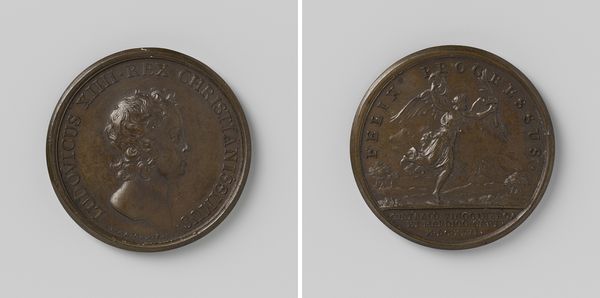
Opening van het Noordzeekanaal, ter ere van Willem III, koning der Nederlanden, penning geslagen op last van de Amsterdamsche Kanaal Maatschappij 1876
0:00
0:00
metal, relief, bronze
#
portrait
#
medal
#
dutch-golden-age
#
metal
#
relief
#
bronze
#
history-painting
Dimensions: diameter 5.1 cm, weight 51.59 gr
Copyright: Rijks Museum: Open Domain
Curator: What strikes me most about this commemorative medal is its quiet grandeur. Can you see how this particular bronze relief captures not only an important moment in Dutch history but also evokes a powerful sense of national pride? Editor: Bronze, always feels weighty, doesn’t it? Immediately, the piece makes me think of the sea and power – a kind of steadfast, maritime empire sort of vibe. It’s also…very male, very bearded, isn't it? Like a particularly impressive coin from a pirate king's collection. Curator: It absolutely has that sense of weight about it. Commissioned by the Amsterdam Canal Company and crafted by Edouard Louis Geerts in 1876, this medal commemorates the opening of the North Sea Canal by King William III. On one side is William himself. The other side of the medal celebrates the nautical achievement. Editor: I love how they packed so much into a small space, the relief's really lively and active, full of… drama, even. How were such events commemorated back then, anyway? Curator: Medals like these were frequently distributed amongst those involved with or celebrating the event. In this instance, the symbols are dense: we see the King represented, of course, as well as a ship carrying what appears to be dignitaries, likely representing the power and authority vested in the canal’s success. This visual language conveys that power and projects an image of Dutch ingenuity. Editor: Right, so, it’s both celebration and PR? It's interesting how different ages glorify achievements! I suppose Instagram posts and TikTok dances are our modern equivalents of royal beards on coins. But in this case, with its density, I wonder how the public actually interpreted these compressed images at the time. Were people even looking closely, or did they get the overall message regardless? Curator: I imagine many viewed it less as a piece of art, and more as a status symbol, a token that reinforced their connection to Dutch progress. In any case, it successfully conveyed that era's vision of ambition. Editor: Well, even viewed now, I'm moved! Even from a distance, and beyond all its historical baggage. Though the symbols may fade, that basic hum of achievement remains strong.
Comments
No comments
Be the first to comment and join the conversation on the ultimate creative platform.
